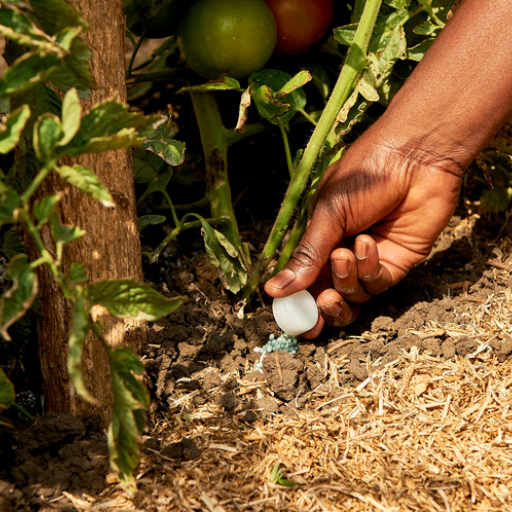In gardening and agriculture, maintaining healthy soil is paramount to fostering robust plant growth. However, not all plants thrive with high nitrogen levels; some require a more balanced nutrient profile to reach their full potential. This article explores the importance of selecting the right organic fertilizers, specifically those with low nitrogen content, to suit different plant needs. By understanding the roles of various nutrients and how they affect plant health, gardeners and farmers can make informed decisions that promote sustainable and flourishing gardens. We’ll delve into the benefits of low nitrogen fertilizers, the types available, and practical application tips to ensure your plants get the nourishment they need without the adverse effects of excessive nitrogen.
What is Low Nitrogen Organic Fertilizer?

What’s the use of Low Nitrogen Fertilizers?
The utilization of low-nitrogen fertilizers is significant for plants that are excessively delicate to nitrogen or that are at particular growth stages in which there is a need for balanced nutritional intake. This can lead to excessive foliage growth at the expense of fruits and flowers, as well as nutrient imbalances that prevent overall plant health and make it easier for plants to develop diseases. Gardeners can enhance steady healthy growth, better quality and quantity blooms, and maintain soil ecosystem through going for low nitrogen fertilizers.
How do organic fertilizers work?
In contrast to synthetic fertilizers that yield instant nutrients, organic ones decompose slowly by aid of microorganisms in the soil. The slow release ensures that there is a consistent supply of nutrients over time helping in achieving uniform plant growth and minimize leaching risks. Besides this, organic fertilizers increase water retention capacity by increasing organic matter content thus promoting beneficial microbes activities in the soil. These effects together help create a good growing medium for crops.
What Are Some Common Ingredients That Can Be Found In Low Nitrogen Fertilizers
Low nitrogen organic fertilizers often contain ingredients that offer balanced nutrients so as not to overwhelm plants with excess nitrogen.
Some typical ingredients include:
- Composted Manure: This has moderate amounts of nitrogen along with other essential nutrients and enhances structure in soils.
- Bone Meal: It contains high levels of phosphorus and calcium which are vital during the development of roots and flowering process.
- Kelp Meal: It contains trace minerals, a small amount of nitrogen plus some hormones needed by plants generally.
- Compost: This adds more organic matter into the soil thereby improving its nutrient status and structure.
- Rock Phosphate: It supplies phosphorus as well as calcium required for energy transfer within cells’ walls.
They keep up a balance on providing nutrients necessary for healthy growth without resorting to high –nitrogen bases whose use may cause problems.
How Does Low Nitrogen Fertilizer Benefit Soil and Plants?
Effect on Soil Health
Soil health is greatly improved by low nitrogen fertilizers. They supply a balanced mix of nutrients that improve soil organic matter leading to better soil structure and increased water-holding capacity. This creates conditions conducive for the proliferation of beneficial soil microorganisms that break down organic matter and make nutrients available to plants. Reduced nitrogen levels also help minimize nutrient leaching and runoff, which protects our waterways and promotes sustainable agricultural practices. Therefore, low nitrogen fertilizers are essential in supporting healthier and resilient soil ecosystems, which result in strong crop growth as well as high agricultural output.
Enhancing Plant Growth
Low nitrogen fertilizers support the growth of plants through a more balanced nutritional profile. Unlike high-nitrogen fertilizers that cause rapid leggy growth, low nitrogen formulations lead to healthier, more sustainable development. Strong root systems develop enhancing plant nutrition uptake from soils. In addition, these soils contain important minerals such as phosphorus, potassium and trace elements that aid in flowering and fruiting among other organs while strengthening plant health generally. As a result there is less danger of overloading the crops with mineral salts thus reducing instances of nutrient burn in addition to enabling them withstand stress better.
Reducing Nitrogen for Plant Protection
Fertilizer excesses with too much nitrogen may negatively impact plant health due to issues like nutrient imbalances or reduced soil fertility rates. When plants are grown with lower amounts of nitrogen they do not get “nutrient burn” where edges become brownish crispy. This happens when the plant has absorbed too much nitrogen which can impede its ability to take up other essential nutrients for example calcium, magnesium or potassium. Additionally, when plants are supplied with High Nitrogen they may grow so fast causing weak spindly stems easily attacked by pests and diseases. By decreasing this input it helps ensure steady robust growth from balanced availability of nutrients; thereby roots establish themselves properly while overall resilience is enhanced amongst all subjected cultivars. With this approach, there is a reduction in the environmental consequences of nitrogen runoff and more healthy and vigorous plants are produced.
When and How to Apply Low Nitrogen Fertilizer?

Ideal Times for Application
Applying low nitrogen fertilizer at the right time ensures that plants receive nutrients when they need them most. According to the best resources, it is generally suggested that low nitrogen fertilizer be applied in early spring and fall. In early spring it helps young plants to establish strong root systems and prevent rapid, weak growth. During the fall, this type of fertilizer prepares plants for winter dormancy by encouraging root growth and nutrient storage rather than producing new foliage. Moreover, low nitrogen fertilizer should be applied after heavy rainfall or deep watering as this maximizes nutrient absorption and minimal runoff. A light application of low nitrogen fertilizer can also be done on perennials in midsummer to support gradual sustained growth and flowering.
Proper Techniques of Application
Applying low nitrogen fertilizer correctly ensures balanced nutrition for plants without harmful effects of too much nitrogen.
- Soil Testing: Before applying it, do a soil test so that you know about its nutrient levels and pH. This will help you apply the right amount of fertilizer depending on your soil needs.
- Proper Measurement: Overfertilization can be avoided by following manufacturers’ directions for recommended quantities; a spreader or measuring cup could guarantee that distribution is evened out.
- Surface Application: On lawns and garden beds, evenly scatter the fertilizer over the surface of the soil; this allows for slow release nutrients which are absorbed by roots. For granular fertilizers using a broadcast spreader will ensure equal thickness.
- Incorporation into Soil: For planting beds and vegetable gardens work the fertilizer into the top few inches of soil; this way plant roots can access these nutrients.
- Watering: After application water thoroughly. This enables dissolution thus allowing penetration into soils by nutrients reaching root zone quickly.
- Mulching: Apply mulch after fertilizing as mulch can keep moisture close to uptake zones reducing loss from slopes where rainwater easily flows.
- Foliar Feeding: Some gardeners use foliar feeding, in which a diluted liquid fertilizer is sprayed directly on to leaves for immediate nutrient delivery. This method is outstanding for quickly addressing specific nutrient deficiencies.
By following these directions, low nitrogen fertilizer can be applied efficiently thereby promoting healthier plant growth and minimizing environmental impacts.
Understanding Label Instructions
However, understanding the main components of labels makes it easier to maintain optimal plant health and safe application. Highlighted here are some of the key elements commonly seen in fertilizer labels:
- N-P-K Ratio: Three numbers representing percentages of nitrogen (N), phosphorus (P), and potassium (K) are prominently displayed on fertilizer labels. For example, if you have a label reading 10-5-5, this means that the product has 10% Nitrogen, 5% Phosphorus and 5% Potassium. Among these nutrients, Nitrogen promotes foliage growth; phosphorus aids root and flower development while potassium boosts the overall health of plants.
- Application Rates: Application rates are recommended on the label so as to avoid over-fertilization that may lead to damage in plants. Follow the instructions based on the type of plants and area size. In many cases there will be separate instructions for different types of plants such as lawn vs garden or shrubs/trees.
- Safety Precautions: Safety precautions are included in labels meant to guide people on how they should handle them safely including application guidelines. Keep an eye out for any warnings concerning skin or eye contact as well as storage or disposal information. Be sure to wear protective gloves and eyewear which is highly desirable when handling this product
- Additional Ingredients: Apart from the main nutrients, secondary nutrients such as calcium, magnesium or sulphur as well as micronutrients like iron, manganese and zinc may be indicated in labels. For balanced plant nutrition, these elements are also important.
- Application Method: The application method is detailed in a guideline which covers spreading, dilution or mixing with soil. By following these guidelines, it will make sure that the nutrients reach plants more efficiently.
Through knowing these peculiarities of fertilizer labeling you can be more discerning and support your plants’ nutritional needs effectively.
What Alternatives to Low Nitrogen Organic Fertilizers Exist?

Compared to High Nitrogen Fertilizers
When low nitrogen organic fertilizers are compared to high nitrogen ones, several key differences and advantages can be identified. On the one hand, high nitrogen fertilizers (often synthetic) cause plants to grow rapidly and are particularly good for leafy vegetables and lawns when they need an instant boost. Nonetheless, this may lead to nutrient imbalances, increased soil acidity and environmental issues like water way pollution through run-off. By contrast, low nitrogen organic fertilizers that originate from sources such as compost or manure release nutrients at a slower pace thus encouraging steady growth while also improving soil conditions over time. This improves soil structure, promotes good microbial activity and reduces nutrient leaching risk. When we talk about quick results in farming then high nitrogen fertilizers would really do but the use of low nitrogen organics will ensure sustainability in gardening.
The Use of Compost and Manure
Compost is essential in enriching soils with vital nutrients for growing crops as well as enhancing their structures as compost is produced from decomposed kitchen wastes or garbage collected from yards. It not only holds moisture but also bears some microbes that help in reducing soil erosion cases as well. While on the other hand manure provides a constant supply of Nitrogen, Phosphorous, Potassium among other elements within it that boosts fertility in the soil. Well aged manure helps improve soil aeration and water holding capacity. Both materials promote sustainable gardening practices by recycling waste products thereby reducing dependence on synthetic fertilisers hence promoting a healthier environment for plant growth.
Introductory Remarks on Slow Release Fertilizers
Slow-release fertilizers are new solutions aimed at providing continuous feeding of planted crops over extended periods of time. In contrast to traditional fertilizers that provide rapid release of nutrients causing frequent reapplication and potential nutrient runoff; slow-release counterparts minimize these problems by releasing plants nutrients gradually over time. This way plants have consistent feeding leading to better growth and avoids the risk of nutrient leaching into waterways. These fertilizers are highly recommended for gardeners who want to be more efficient and environmentally sustainable because they help maintain soil fertility with fewer applications. Similarly, slow release fertilizers can cut down on costs as they save one from buying fertilizer regularly and applying too much only when needed by a plant for it to grow well.
How to Choose the Best Low Nitrogen Organic Fertilizer for Your Needs?

Conducting a Soil Test
My first move is to perform a soil test in order to determine the best low-nitrogen organic fertilizer for your needs. The aim of this test is to reveal what nutrient levels are present, pH balance and the composition of the soil altogether. I can tell therefore which nutrients are missing and require supplementation if there is any deficiency that could be attributed to these factors. Soil tests can be done at home by using kits or sending samples to professional laboratories for detailed analysis. From the results of my soil test, I am able to choose a low nitrogen organic fertilizer that will specifically meet my soil’s requirement hence enhancing optimal plant growth.
Reading Nutrient Content Labels
For me when I read nutrient content labels, I try to understand what ratio primary nutrients like nitrogen (N), phosphorus (P), and potassium (K) are in, which are represented as N-P-K on packaging. For instance, it tells you how much percent by weight each nutrient contributes towards fertilizers being sold on the market under this category. To find such bottles one should look out for lower number one because it indicates more phosphorous than nitrogen or potassium available in them making them contain minimal amount of nitrogen required by organisms like trees and grasses especially if they have been identified from my earlier examination of soil composition data. By reading these labels attentively in comparison with other similar products in the retail shops, I am able to select farm inputs that does not only suit my particular gardens but facilitates sustainable agriculture practices thus promoting healthy plants.
Considering Plant Type and Growth Stage
When considering about types of plants and different stages they grow through during their life cycle, I match my choice of low-nitrogen organic fertilizer accordingly with specific requirements for each developmental stage. Young ones or seedlings for example need relatively high phosphorus levels so that they would establish good root systems while mature crops particularly those at flowering/fruiting states do better with enhanced potassium levels to improve blooms and fruiting. Leafy vegetables and green plants might need consistent, balanced nutrients that will not give enough nitrogen to them leading to too much growth and low yield. Moreover, if the nutrient content of my fertilizer is geared towards meeting the specific needs of my crops throughout their different stages of growth, I can ensure an integrated approach which builds strong, sustainable plant life.
Frequently Asked Questions (FAQs)

Q: What are some common organic fertilizers that have low nitrogen content?
A: Fish emulsion, blood meal and compost are common examples of such fertilizers. These fertilizers come from natural sources and balance the nutrients in soil without giving it much nitrogen.
Q: Why should gardeners use low-nitrogen organic fertilizers?
A: For gardeners, using less nitrogenous organic manure is important to avoid too much nitrogen in the soil which might cause stunted growth of plants, yellowing and reduced photosynthesis. This also ensures that other major plant nutrients like phosphorus and potassium are always available for effective uptake by the crops.
Q: How can low-nitrogen organic fertilizers help achieve better plant growing conditions?
A: Low-nitrogen organic fertilizers release their nutrients slowly, improve soil structure and provide a sustainable balance of nutrient contents in soils. Besides this they enable plants to naturally fix nitrogen while promoting the growth of healthy roots.
Q: What is the difference between organic nitrogen fertilizers and inorganic ones?
A: Organic nitrogen fertilizer can be obtained from plants or animals whereas they release this element gradually. Inorganic ones on the other hand are made through artificial processes providing a rapid but sometimes excessive amount of nitrogen in soils.
Q: How often should I use a low-nitrogen organic fertilizer in my garden?
A: The answer depends upon both type of fertilizer being used as well as what your individual plants require. Typically speaking however, a low-nitrogen organic fertilizer should be used at the beginning of each growing season with perhaps one or two more applications during the year for maintaining soil fertility.
Q: What role does nitrogen play in plant food and overall plant health?
A: Nitrogen is an important macronutrient responsible for greenness and robust development as it aids both photosynthesis and protein synthesis. However, excesses lead to imbalances, hence bad health for plants; hence the importance of using the right quantity.






